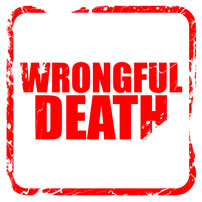OSHA’s “Fatal Four”
March 14, 2018 Nearly 6.5 million individuals are employed across more than 250,000 jobs in construction. According to the Occupational Safety and Health Administration (OSHA), construction is one of the deadliest industries for workers. The administration has found that workers face the most severe risks from what it calls the OSHA’s “Fatal Four”, or:
Nearly 6.5 million individuals are employed across more than 250,000 jobs in construction. According to the Occupational Safety and Health Administration (OSHA), construction is one of the deadliest industries for workers. The administration has found that workers face the most severe risks from what it calls the OSHA’s “Fatal Four”, or:
- Fall hazards;
- Electrical hazards;
- Caught-in-or-between hazards, and
- Struck-by hazards
Together, the “Fatal Four” account for nearly 60% of the annual fatalities that occur in that industry. In other words, every 1 out of 5 workers who die in work-related accidents are employed in a construction job. Luckily, employers and workers can take several steps to prevent these injuries and death. Some examples of helpful steps to take include increasing training initiatives to teach workers how to identify hazards and ensuring that employers and job sites are in compliance with federal safety standards.
In 2016, OSHA counted a total of 4,693 worker fatalities – 991 of these were in the construction industry. If “Fatal Four” hazards were completely eradicated, more than 630 workers would be saved from deadly injuries every year. Construction industry employers need to prioritize identifying these dangers particularly, and implement safety policies that limit injuries and death.
Falls are the reason behind the largest number of fatalities in construction – a total of 384 workers died from falling. Some of the riskiest scenarios for construction falls are working on ladders, scaffolding and stairs, as well as on different building structures and exterior construction areas. To prevent fall risks, employers can take many helpful steps. Some of these include:
- Installing warning lines;
- Providing personal fall arrest systems;
- Ensuring that guardrails are safe and effective, and:
- Having floor covers
Other workplace hazards like electrical, caught-in-or-between (primarily equipment or vehicles) and struck-by hazards are common culprits in hundreds of preventable worker fatalities annually. Electrical hazards put workers at risk for serious injuries and death from electrocution, electric shock, explosions and fires. When it comes to struck-by hazards, OSHA finds that employees are most likely to sustain injuries from:
- Falling or flying objects, such as tools or flying particles;
- Heavy equipment and vehicles, like trucks and cranes, and:
- Masonry or concrete walls being constructed
By enacting certain control measures (providing personal fall arrest equipment, requiring that workers wear hardhats, performing routine equipment and tool inspections, etc.) employers can limit caught-in-or-between and struck-by hazards. OSHA reports that some of the most common caught-in-or-between hazards are:
- Being pulled into or caught in machinery or equipment;
- Being compressed or crushed between rolling, shifting or sliding objects such as semi-trailers and a dock wall, or between a truck frame and a hydraulic bed being lowered, and:
- Cave-ins (also known as “trenching”)
Depending on what kind of hazard an employer is trying to limit, there will be different steps he or she needs to take. OSHA has many helpful safety standards that employers can – and should – refer to in order to ensure they’re doing everything they can to promote worker safety.
It is important that workplaces encourage individuals to report all hazards. Workers who fear retribution from their employers are more likely to avoid filing reports – but this can result in deadly injuries. Employers should promote transparency and open communication, as well as working quickly and safely to remedy all workplace dangers reported or observed.
Don’t forget: the majority of the accidents that result in on-the-job fatalities for construction workers really are preventable through ethical and compliant safety practices. Employers know that construction workers are more likely to be injured or die because of fall, struck-by, caught-in-or-between and electrical hazards, and they should take every possible step to protect the lives of their workers. The Occupational Safety and Health Act of 1970 (or the “OSH” law) requires that employers provide a workplace safe from serious recognized hazards, as well as to comply with its rules, standards and regulations.
The “Fatal Four” are undoubtedly serious – as well as recognized – workplace hazards. Employers and employees alike can read more information on federal safety standards and rules. If you’re a construction worker who has been injured or is at risk for injuries due to an employer’s failure to comply with safety requirements, please contact a representative at our firm who may be able to help.
Philadelphia Workers’ Compensation Lawyers at Galfand Berger, LLP Help Individuals Injured at Work
If you were injured on the job, please contact the Philadelphia Workers’ Compensation lawyers at Galfand Berger. With offices located in Philadelphia, Bethlehem, Lancaster, and Reading, we serve clients throughout Pennsylvania and New Jersey. To schedule a consultation, call us at 800-222-8792 or complete our online contact form.
 Google Screened
Google Screened
